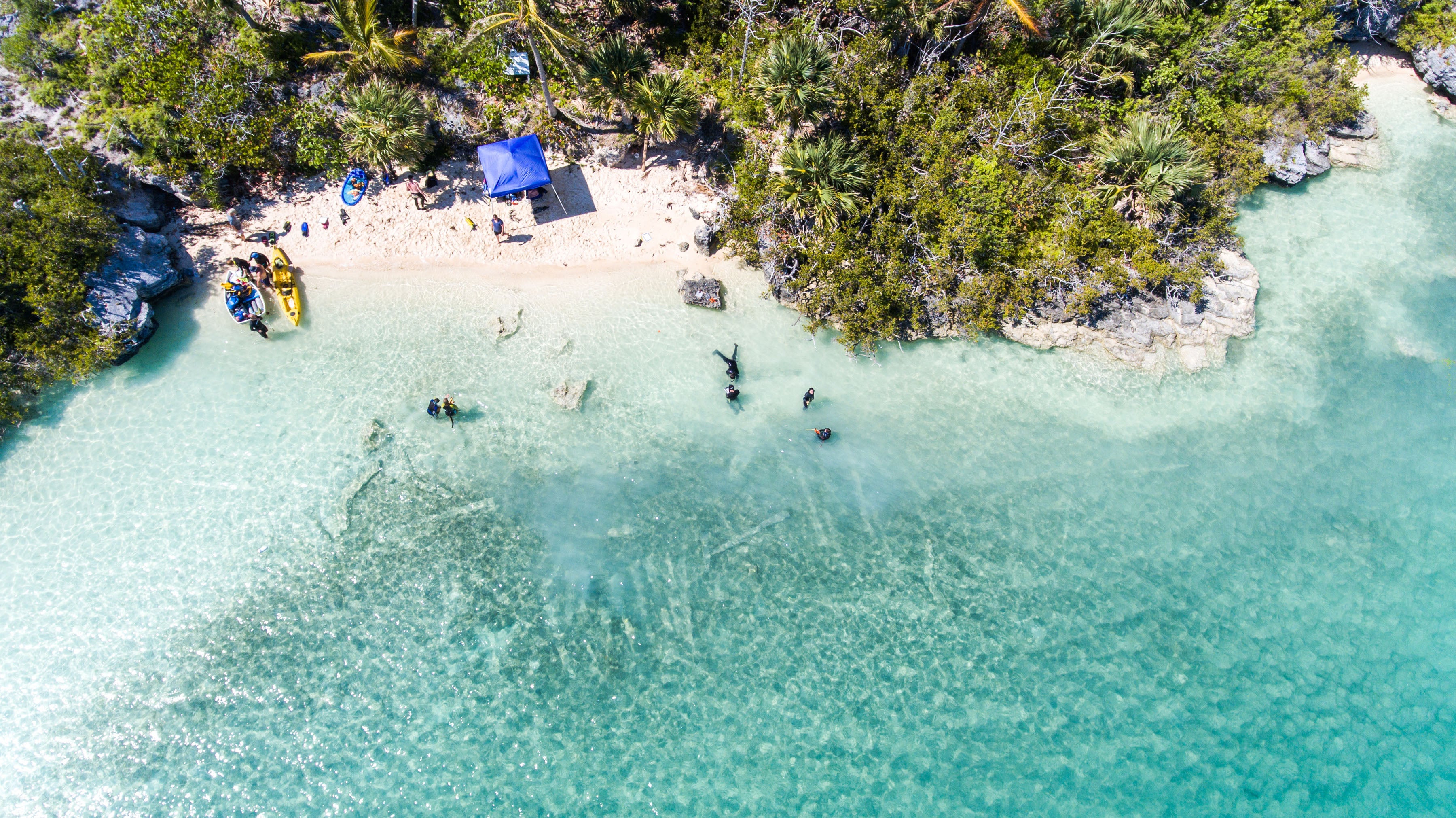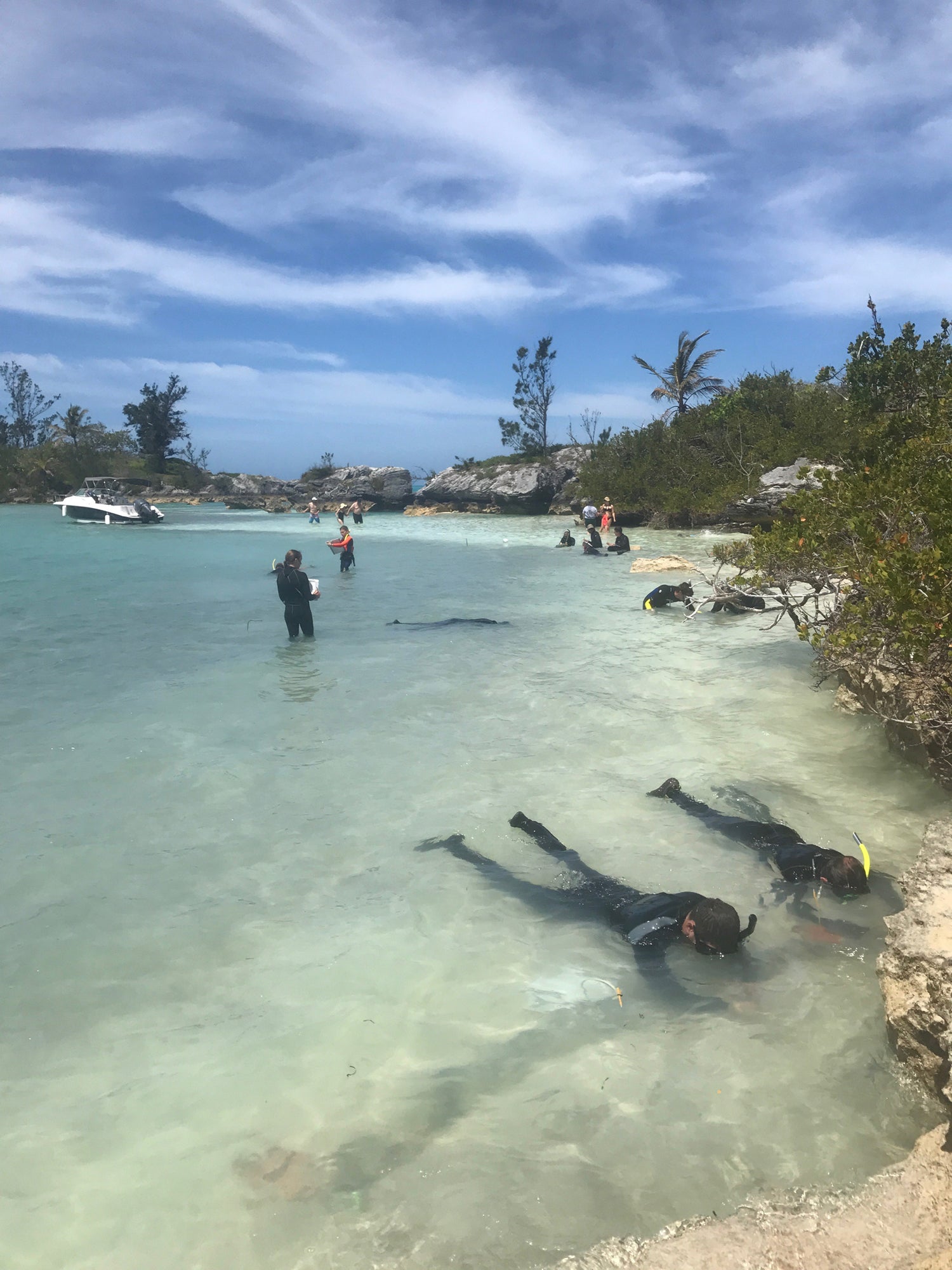Remains of a possible 1619 Dutch privateer identified in Bermuda
East Carolina University archaeologists working in partnership with the National Museum of Bermuda (NMB) have announced that they may be one step closer to linking an unidentified shipwreck site to the nearly 400–year-old story of a stranded Dutch privateer or pirate ship.
The wooden sailing ship, described by the fifth Bermuda Governor Nathaniel Butler as a Dutch pinnace traveling from the Caribbean, reportedly grounded on the rocks of Bermuda’s western reef in 1619. Islanders rescued the Dutch and English crew of down-on-their-luck buccaneers, and they were repatriated within a year; the ship itself was reportedly left to wind and weather, disappearing with the next Atlantic-borne storm.

ECU maritime studies professor Bradley Rodgers and a team of students have mounted the first scientific exploration of an unidentified shipwreck site in Bermuda. (Photos contributed by the National Museum of Bermuda)
New archaeological evidence, however, suggests that Bermudians may have secretly lightered the cargo ashore and floated the ship off the reef, hiding it in a shallow bay to salvage arms, lumber and hardware — essential commodities for an isolated but burgeoning colony.
The wreck site may represent one of the earliest colonial-built, Dutch vessels discovered in the Americas, and the earliest and perhaps only fully archaeologically documented privateer/pirate vessel, according to Dr. Bradley Rodgers, ECU professor of maritime studies. Combined historical and archaeological studies will continue and could reveal new details about life in the 17th century, wrecking practices and the early settlement period in Bermuda.
In 2008, Rodgers examined a wreck located in a quiet harbor at the west end of the island, a short distance from the Dutch pinnace’s last known position on the reef. He recognized the wreck to be an early and significant vessel type. In May 2017, Rodgers returned with a team from ECU, and along with NMB, mounted the first scientific exploration of the site, archaeologically examining, mapping and recording the exposed sections of the wreck.
The remains are well known to locals, but their origins are not.
“The ship remains appear to be early and significant, and archaeological evidence demonstrates unmistakable traits of northern Dutch design, techniques that have not been used in four centuries,” Rodgers said.
It was not uncommon during the 17th century to salvage ships in the west end of Bermuda, he said, out of sight of customs officials in the east end, to avoid taxes or levies on the goods and materials retrieved. “Salvage marks are plentiful on the disarticulated wreck, and though many of the fasteners and planks have been removed, many of the timber remains are in great condition,” he said.
There is much work to do to complete the analysis of the shipwreck, according to Rodgers, as it takes “extensive archival research, archaeological analysis and funding to fully verify the find, and it is one of the more confusing wreck sites we have ever studied — it has been completely taken apart down to the fastenings.”
However, the team has documented enough of the site to identify ship construction techniques matching those described in Dutch treatises of the 17th century. In addition, the wood has been identified as greenheart (Ocotea reodiei), a New World timber historically harvested in Dutch trading territory in South America, and the few artifacts seen reflect Dutch northern European heritage from the early 17th century.
Further investigation should shed more light on life in 17th century Bermuda and its early settlement, especially pertaining to the salvage of ships in distress.
“The economics and impact of salvage in the early settlement of Bermuda has not yet fully been explored by academics and can provide a fascinating window into how the first Bermudians survived on an isolated island,” said Elena Strong, NMB executive director.
“Bermuda’s rich underwater cultural heritage, which is protected by law, is not only a valuable cultural tourism asset, but also comprises a tangible archive of the interaction of African, American and European cultures over five centuries,” she said. “Over the past 40 years, research on these wrecks has yielded considerable data informing historical narratives about the lives of the people who depended on these vessels to ferry goods and people to various ports along the Atlantic littoral.”
-Contact: Bradley Rodgers, professor of maritime studies, ECU, rodgersb@ecu.edu, and Elena Strong, executive director, National Museum of Bermuda, director@nmb.bm
